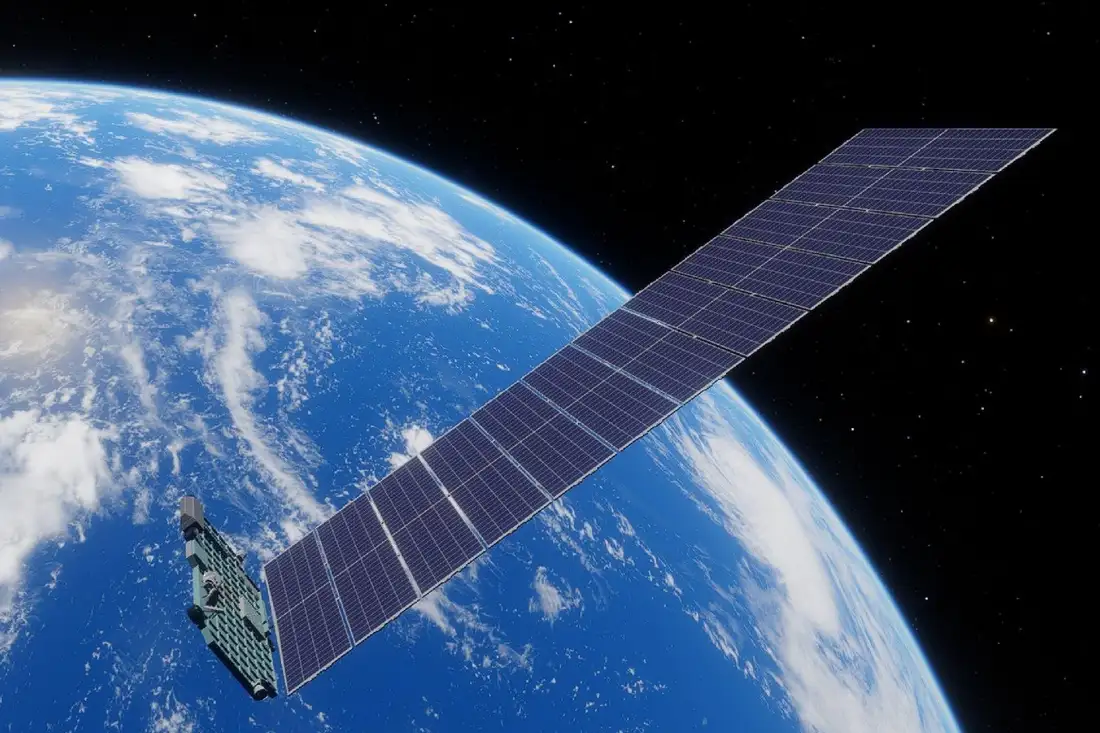SpaceX’s Starlink satellite constellation, designed to provide global internet coverage, is facing significant challenges due to increased solar activity. Recent solar storms and a phenomenon known as the ‘Terminator’ event have led to service disruptions and satellite losses, highlighting the vulnerabilities of low-Earth orbit (LEO) satellites to space weather.
Understanding the Solar Threat to Satellites
The sun emits solar flares and coronal mass ejections (CMEs) that can cause geomagnetic storms upon interacting with Earth’s magnetosphere. These storms increase atmospheric density at satellite altitudes, leading to heightened drag and potential orbital decay. In February 2022, a geomagnetic storm caused by a CME led to the loss of 38 newly launched Starlink satellites due to increased atmospheric drag.
Such events underscore the importance of understanding and predicting solar activity to safeguard satellite operations. As the sun approaches its solar maximum, the frequency and intensity of these storms are expected to rise, posing ongoing risks to satellite constellations.
The ‘Terminator’ Event: A Deeper Solar Phenomenon
Beyond typical solar storms, researchers have identified a more complex solar event termed the ‘Terminator.’ This phenomenon marks the transition between solar cycles and is characterized by significant changes in solar activity. Studies suggest that the ‘Terminator’ event may have contributed to the unexpected loss of Starlink satellites in 2022 by causing sudden atmospheric density increases.
Understanding the ‘Terminator’ event is crucial for improving space weather forecasting and developing strategies to mitigate its impact on satellite operations.
Operational Challenges for Starlink and Similar Constellations
Starlink’s extensive network of satellites in LEO makes it particularly susceptible to space weather effects. Increased atmospheric drag during solar storms necessitates frequent orbital adjustments to maintain satellite positions, consuming fuel and reducing satellite lifespan. Additionally, heightened radiation levels can disrupt onboard electronics, leading to service degradation.
Other satellite operators face similar challenges, emphasizing the need for robust design and operational strategies to withstand space weather events.
Mitigation Strategies and Future Outlook
To combat the effects of solar activity, satellite operators are investing in improved forecasting tools and adaptive technologies. Enhanced space weather models aim to provide early warnings of solar events, allowing for preemptive measures such as adjusting satellite orbits or temporarily shutting down vulnerable systems.
Furthermore, designing satellites with increased shielding and redundancy can help mitigate the impact of radiation and atmospheric drag. As our reliance on satellite technology grows, developing resilient systems becomes increasingly critical.
Conclusion: Preparing for a Solar-Active Future
The challenges faced by SpaceX’s Starlink satellites highlight the broader implications of solar activity on satellite operations. As we advance into an era of increased solar activity, understanding and preparing for space weather events is essential to ensure the reliability of satellite-based services.
Continued research into phenomena like the ‘Terminator’ event and investment in resilient satellite technologies will be key to navigating the sun’s influence on our space infrastructure. (Orbital Today)
Subscribe to trusted news sites like USnewsSphere.com for continuous updates.
[USnewsSphere.com / reu.]





